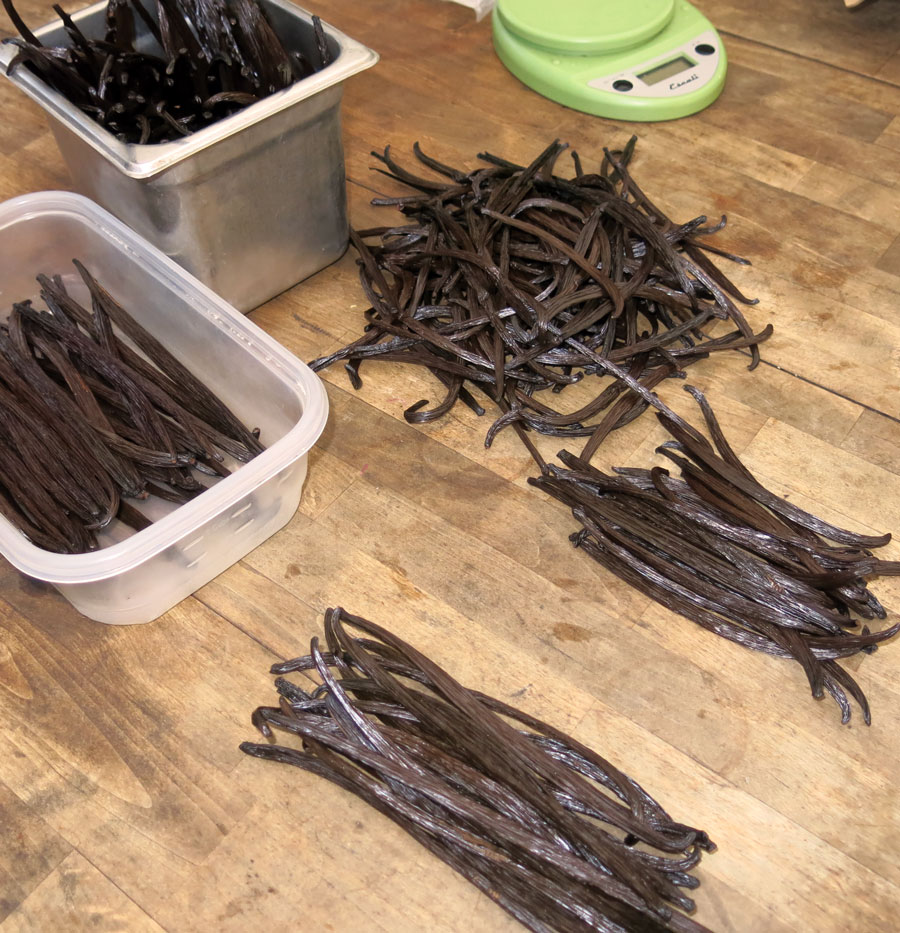
The beans we harvested late last winter have now cured and aged enough to be sold! There will only be limited quantities at first, as beans that were harvested later in the season are not done aging yet.
Full Article…
The beans we harvested late last winter have now cured and aged enough to be sold! There will only be limited quantities at first, as beans that were harvested later in the season are not done aging yet.
Full Article…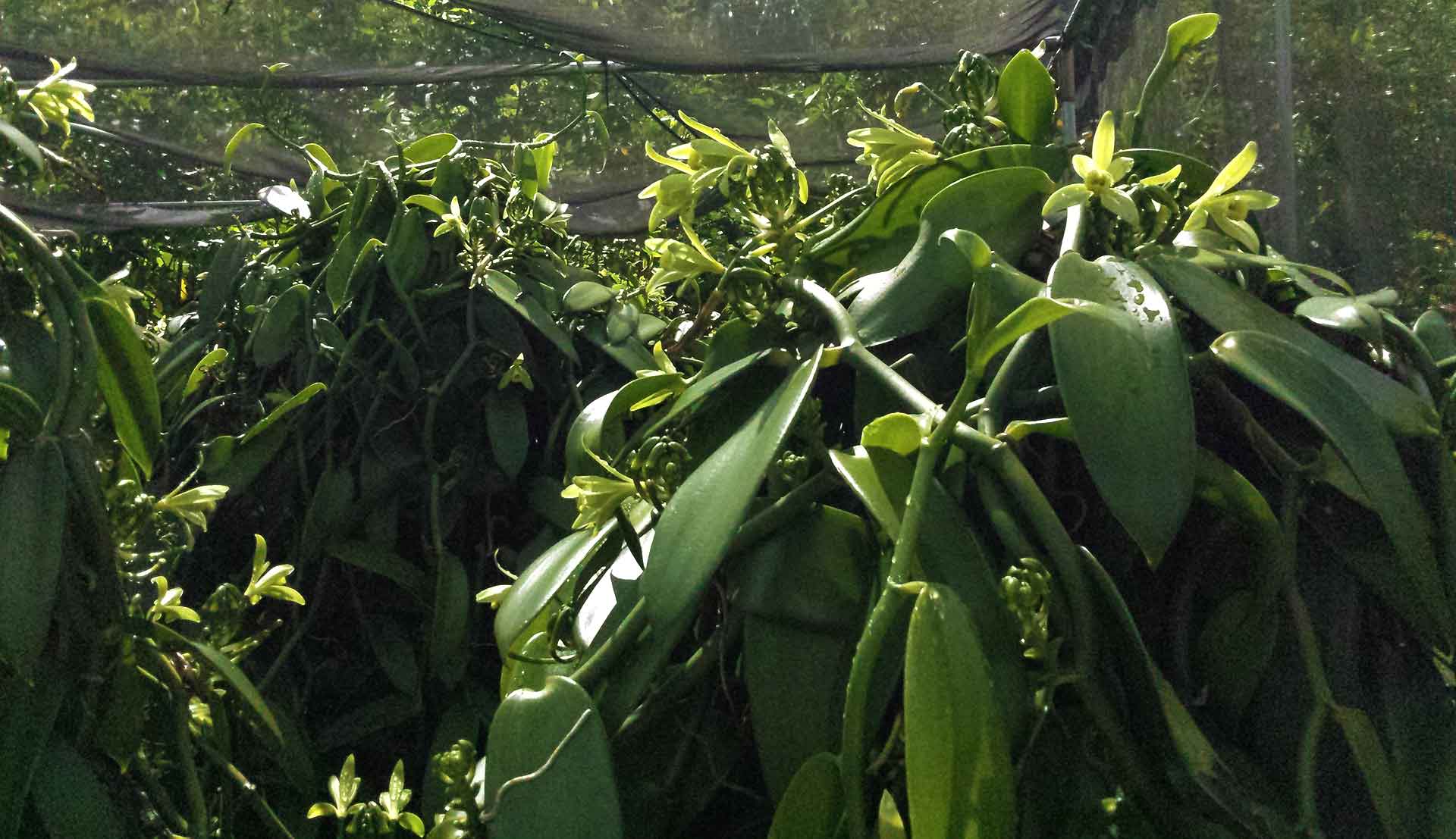
Lisa and I had an incredible day of pollinating yesterday! We’re pretty sure we’ve never had so many flowers going off before. She and I pollinated 682 flowers, taking us nearly 2 hours to complete the day’s pollination.
Full Article…
We’re very pleased to have an article about our vanillery in Kauai Traveler magazine! Read the article here…
Full Article…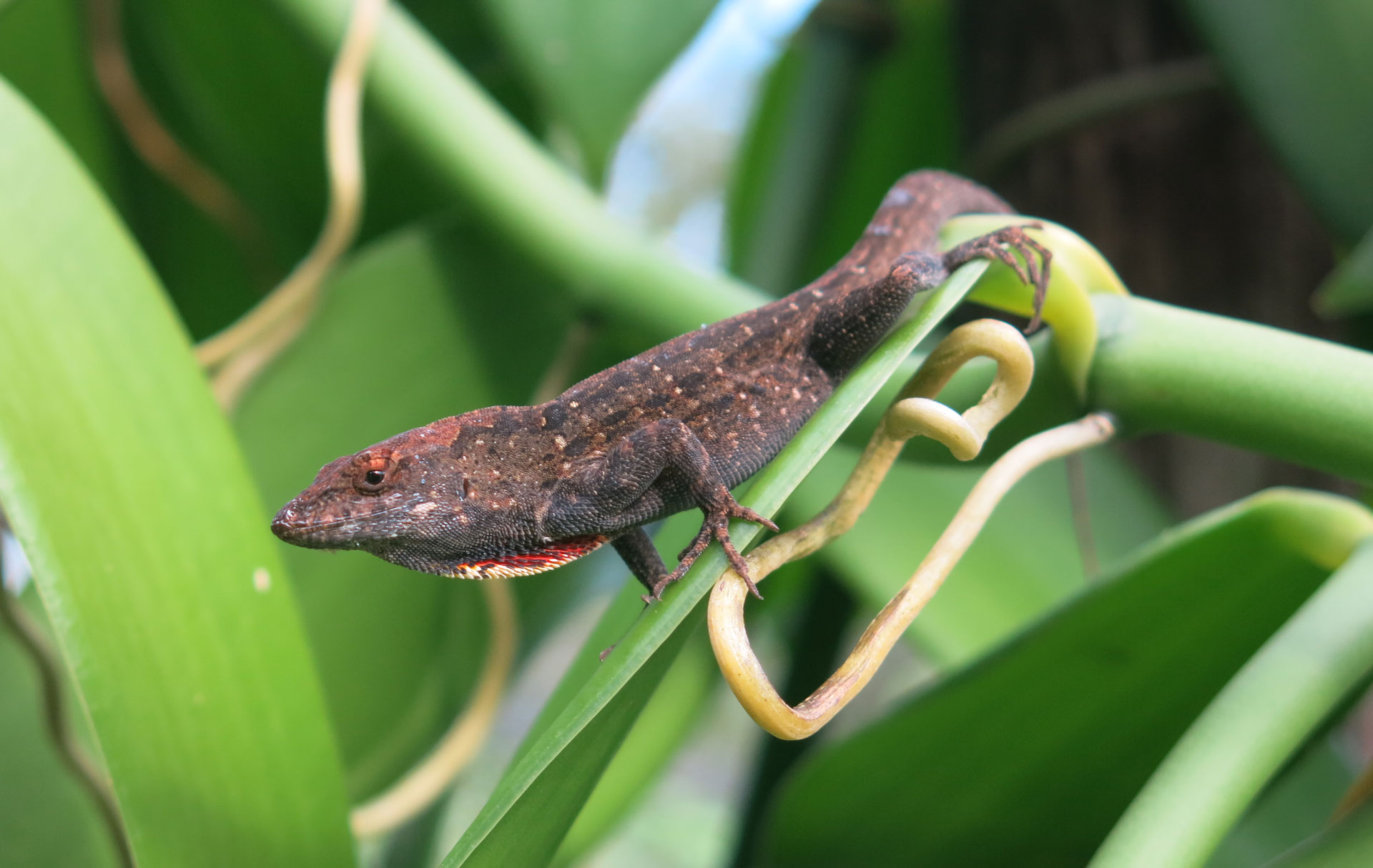
I see a lot of these guys in the vanillery. It must be a great environment for them, a million places to hide and hunt, with convenient walkways so you never have to touch the ground. Mo’o is the Hawaiian word for lizard or reptile…it gets a lot of use since geckos are so common here. Mostly the ones I see in the vanillery are the green anoles. They look like tiny dragons, and they have a lot of personality…certainly when compared to a gecko! Their typical green color matches the vanilla foliage perfectly. They can change color, so they’re often referred to as “chameleons” and though they do have eyelids that are a bit like them, they aren’t chameleons. I… (read)
Full Article…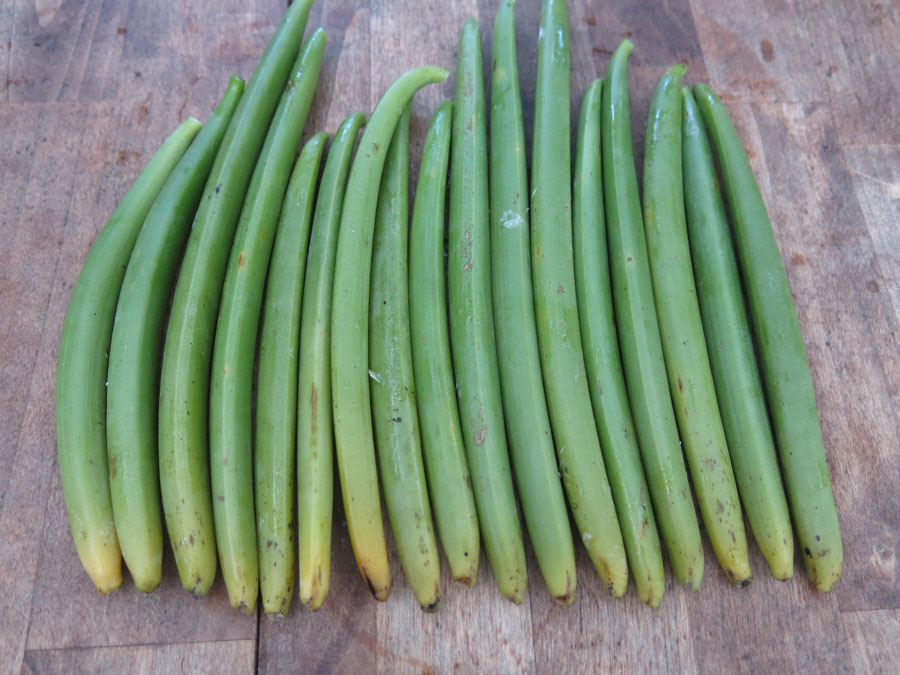
We are at the peak of the harvest season, and during this time, we are harvesting about a hundred beans out of the vanillery every two to three days. Choosing which beans to take requires some pretty sharp observation: the color change can be hard to see in the shady tangle of vines. The beans were pollinated almost a year ago, and a lot of vine growth has taken place since then, burying many of the brooms deep within the growth. In the dim light, it’s easy to mistake the gentle lightening that takes place as the bean matures for the clear signal of true ripeness. Choosing the moment to harvest any one bean is a bit of a game… (read)
Full Article…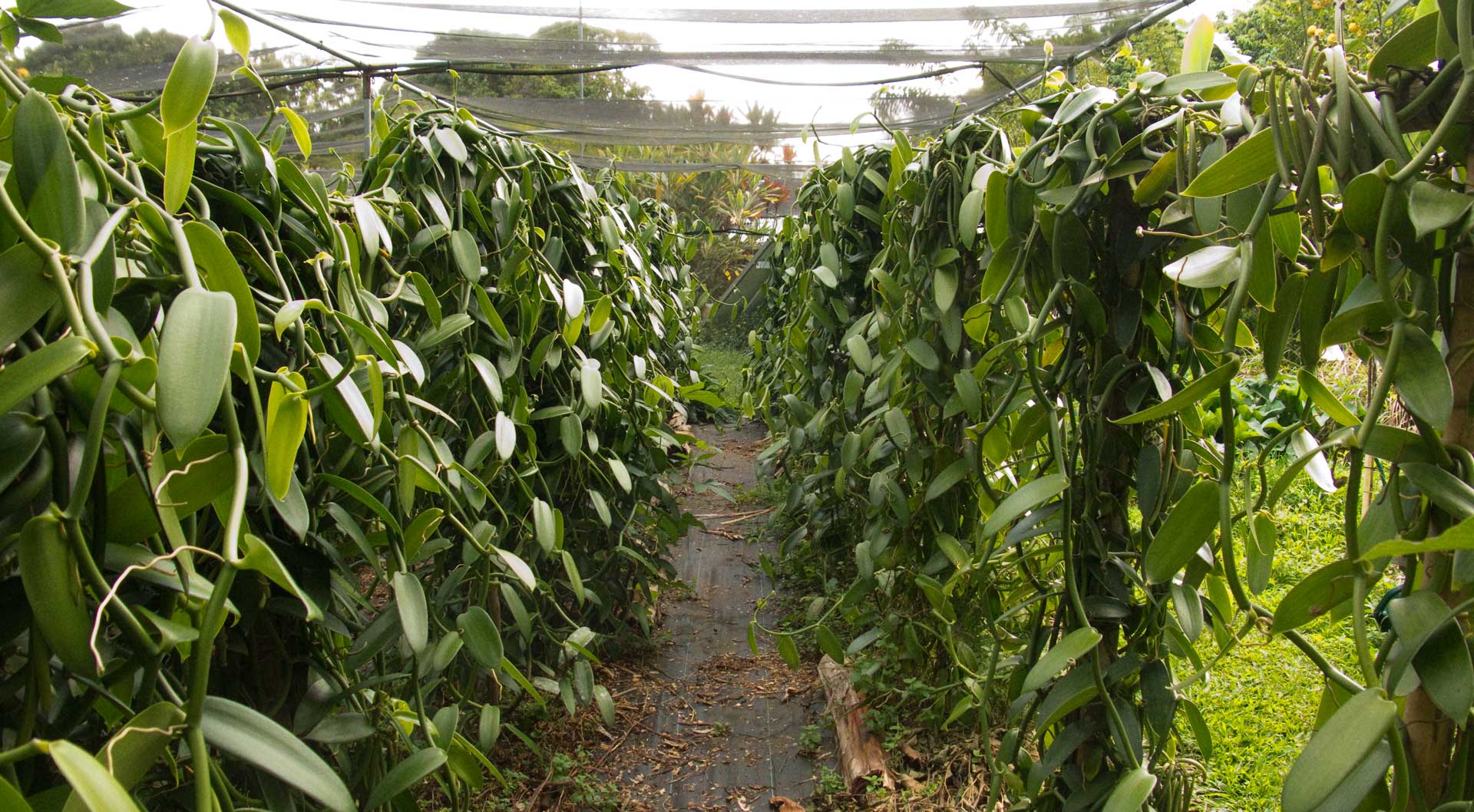
This is the first year we are getting a full harvest out of the vanillery. It’s been a good year, growth-wise, maybe even too good. The vines are growing so thickly now, it’s hard to see the beans for harvesting. This harvest season actually began on January 3, we missed a few early ones, but on that day I harvested 3 dozen beans. It seems to be coming in much earlier this year. Last year’s first harvest was in February sometime. I can only guess that the onset of the harvest season moves around a lot. Today’s harvest was particularly bountiful in terms of bean size. In the photo, I’m holding one of the biggest beans I’ve ever seen, 240mm in… (read)
Full Article…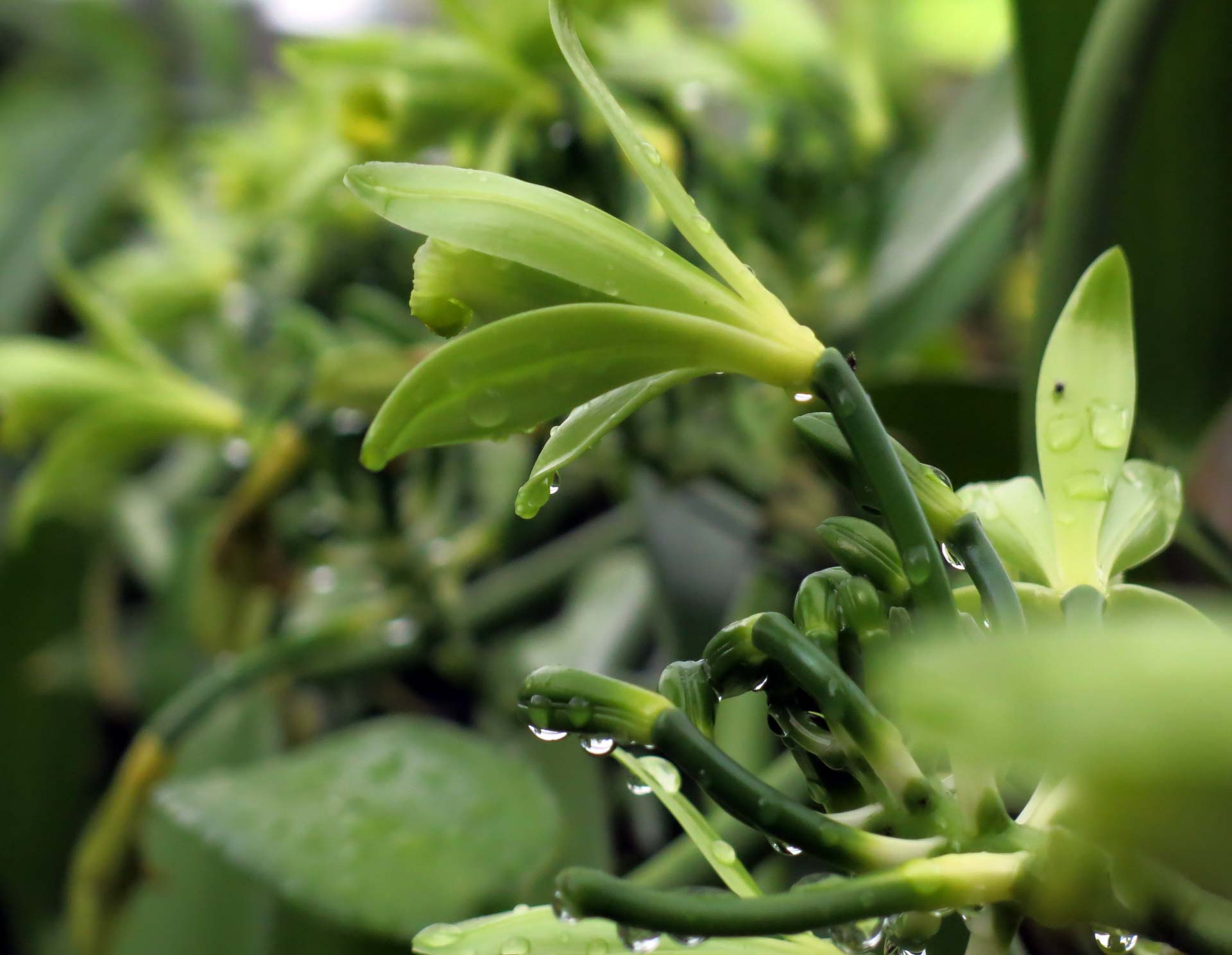
The vanillery is exactly 3 years old now. This Spring, for the first time, we’re seeing full flowering on all the rows. This is great news for vanilla production here, our last two years have seen fairly small harvests. At this rate, there may be many hundreds of pods in here for next winter’s harvest. Having this many flowers does require a significant time investment to get them all pollinated. This is the peak of the flowering cycle, and we’re seeing 1 — 1 1/2 hours of pollinating each morning, and that will keep up for 2 — 3 weeks. You definitely have to plan your morning around that.
Full Article…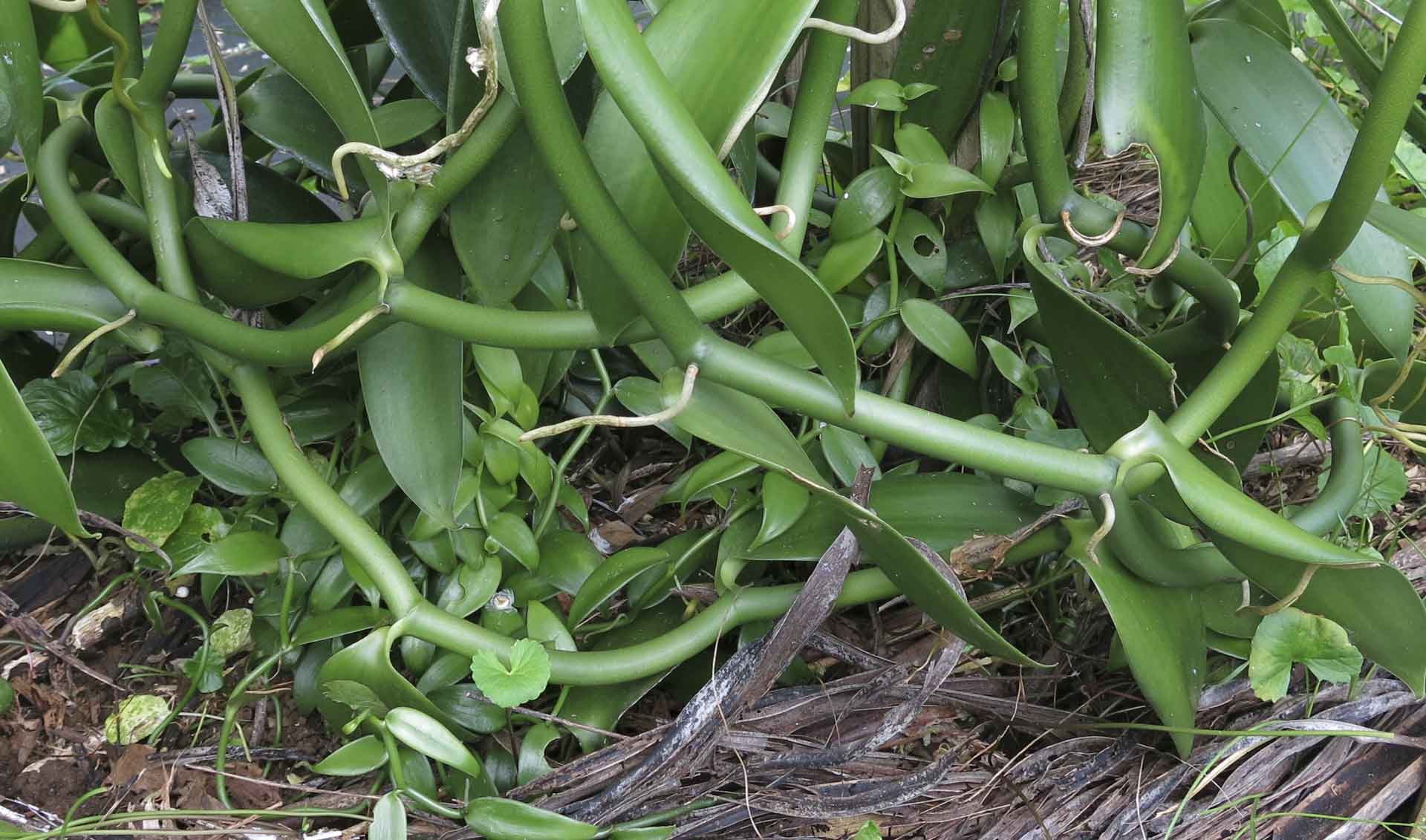
In the first season of fruit in the vanillery, I let a couple of beans ripen naturally, as I sometimes do when they’re too small or overripe. When they ripen on the vine, they split open, turn black and eventually the tiny, tiny seeds come out. I guess if things are just right where those seeds fall, they will germinate and grow into new vines. This is, in my experience, pretty unusual. Most of the time none of those seeds sprout, and the little vines that emerge aren’t tough like full-grown vanilla, they’re extremely delicate. It wouldn’t take much going wrong for that sprout to not survive. Near one of the bamboo posts in the vanillery, it looks like the conditions were just… (read)
Full Article…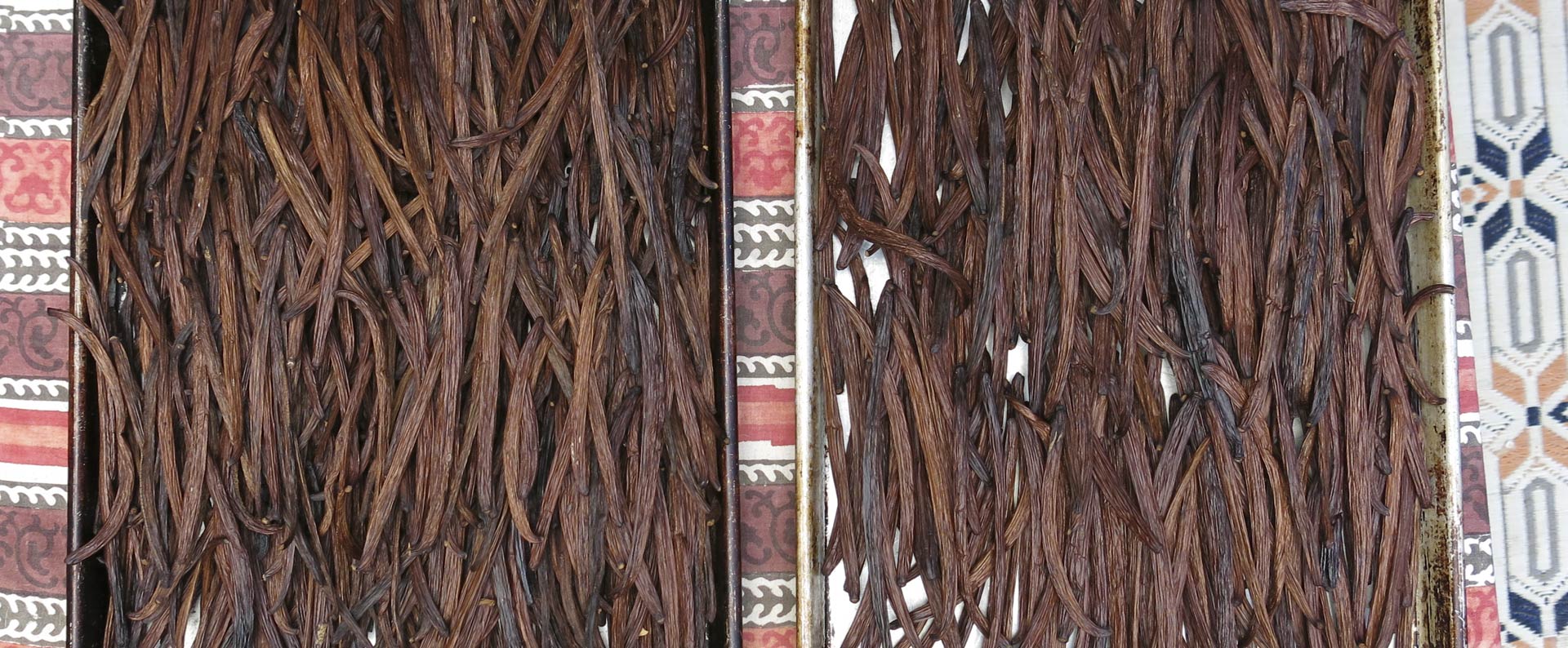
Took the beans out of their box today: it’s time to grade the harvest. The last beans came off the open-air drying racks two months ago, and they’ve been conditioning in their box since then. The beans are graded at this point, divided into the two grades by size, moisture content, and appearance. The grade A beans are bundled and placed in the conditioning box for another 7 months, so there is a total of 9 months of conditioning after the drying is complete. The cured beans are sold to the culinary trade for direct use in recipes. They are brown in color and filled with fragrant, oily “caviar,” the seeds and pulp of the vanilla pod after curing. This is… (read)
Full Article…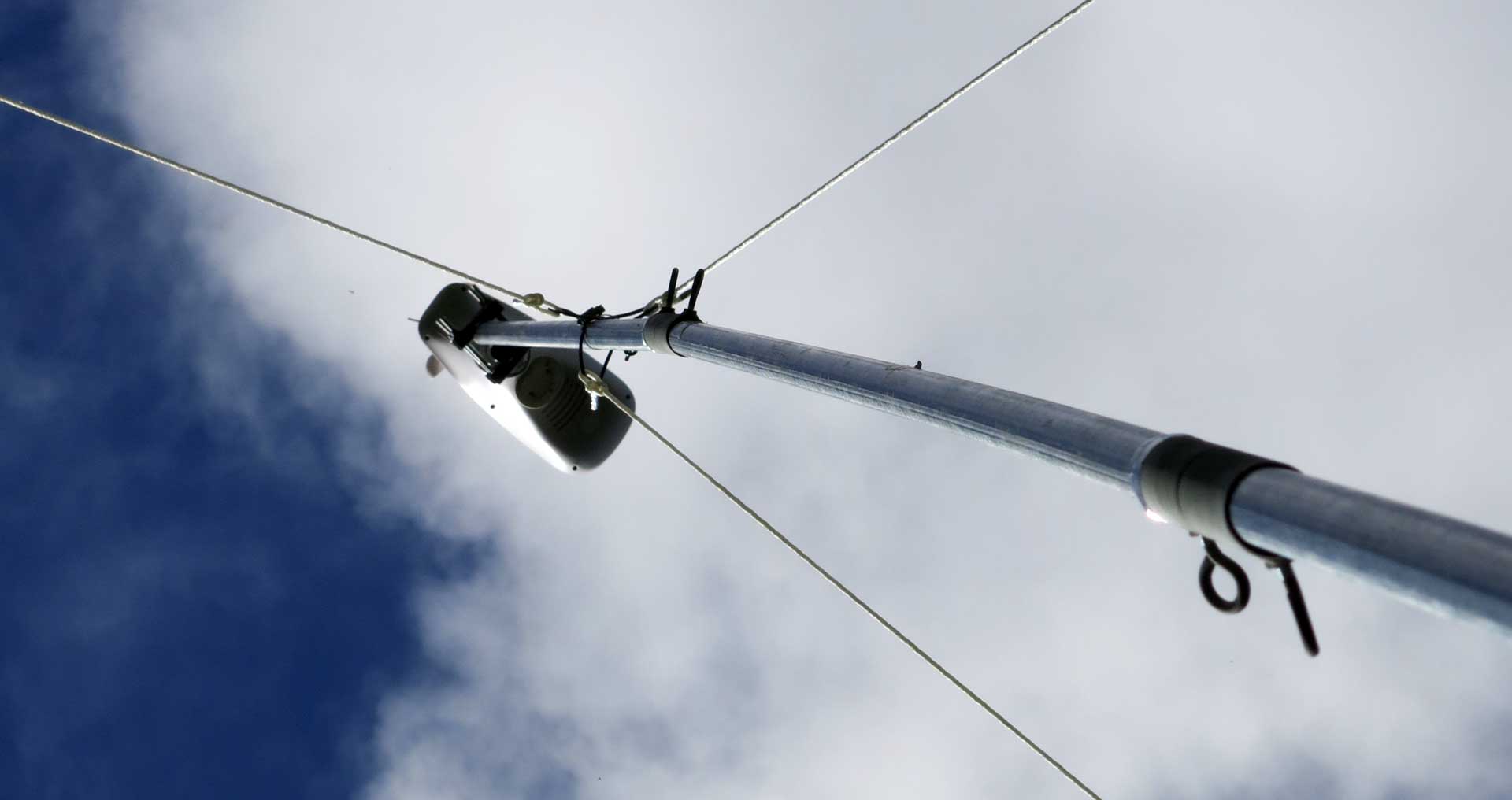
Today, we hoisted our Ambient Weather WS-1400IP sensor unit atop it’s mounting pole. I’ve always wanted to keep our own local weather data, and with the addition of this device, we are officially collecting data and sharing it on the net. We’re still working out some of the details, but this is a exciting development as far as I’m concerned. We call the station “Queen’s Acres,” which is one of the names used for our neighborhood on the back side of Nonou Mountain near Kapaa. Our data stream is visible on Weather Underground at KHIKAPAA19
Full Article…